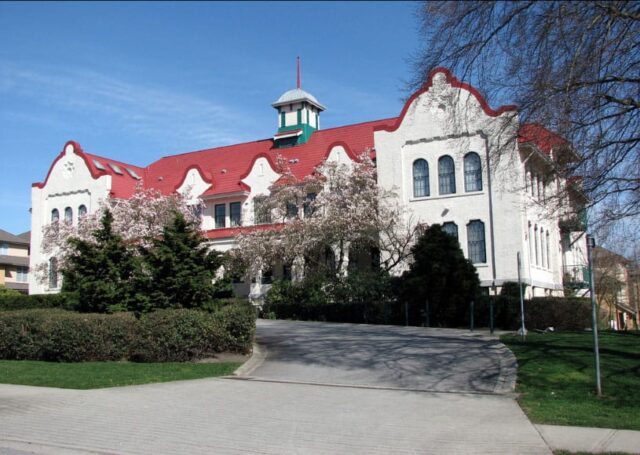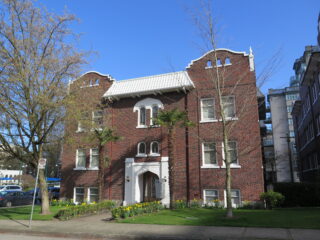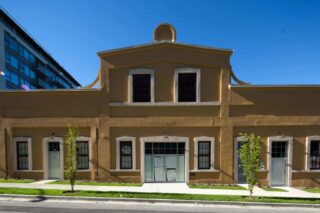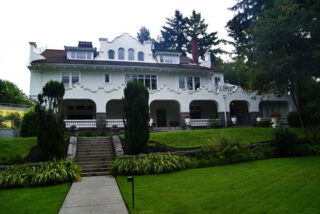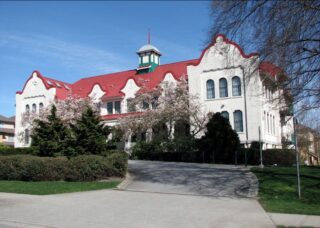White rough-cast stucco was nearly always used for Mission Revival houses, along with tile roofs in terra cotta red or green. Metal tile roofs imitating the rounded clay tile roofs were also used. Vertical windows in assemblies of three to five were grouped together for major rooms, and were usually double-hung. Chimneys were stuccoed and interior . Exterior chimneys were embedded in the parapeted gable ends. Bracketed eaves are the only wood expression other than the windows and doors.
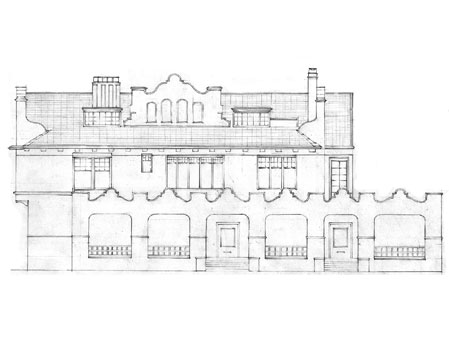
Click on the diagram or expand the term index to learn more about the features.
Balustrade
An entire railing system, as along the edge of a balcony, including a top rail, bottom rail, and balusters.
Flamboyant Dormer
Using molded stucco trim, the parapet wall ends up in a baroque or convoluted top trim (flamboyant is a gothic term meaning flame-like).
Parapet
The extension of a masonry or stucco wall above the roof line.
Pier
A square, sometimes tapered (as opposed to round) column.
Stucco
A material – sometimes called render, made of an aggregate (sand) and a binder (Portland cement, and water). It is applied wet and hardens to a very dense solid. Sometimes used on interior walls, and ceilings (called California plaster), it is mainly used on exteriors and can cover less visually appealing construction materials such as concrete, cinder block, or clay brick.
Transom
A window or light above a door or window.
Verandah
A covered porch wide enough for sitting or dining which wraps around a house on two or more sides.
Form
Mission Revival style is mainly a mansion style in Vancouver, distinctive because of its curvilinear parapets at the gables. Typically, the houses present a romantic, picturesque profile, with curved parapets set into the side-gables and dormers. Roofs are usually tile and the cladding is roughcast stucco. Some may have round or squared towers.
Background
The Mission Revival style originated in California in the 1890s and spread east in the early 20th century. It drew on California’s Spanish colonial history at the same time that other colonial styles became popular on the East coast, inspired by the style of early Catholic Missions in the region. Some of the forms of the original missions (ie. bell towers and elaborate arcades) were maintained in domestic versions. Designers borrowed and adapted these elements to suit traditional house forms. Its popularity spread by the influence of fashionable architects and builders’ magazines. In Vancouver, Mission Revival is primarily an Interwar style, popular between 1920 and 1940.
Details
- Curvilinear parapets at gables and roof
- Low-pitched tile roof
- Wide overhanging eaves
- Deep porches or verandahs
- Large square pillars on porches
- Arched openings
- Stucco siding
